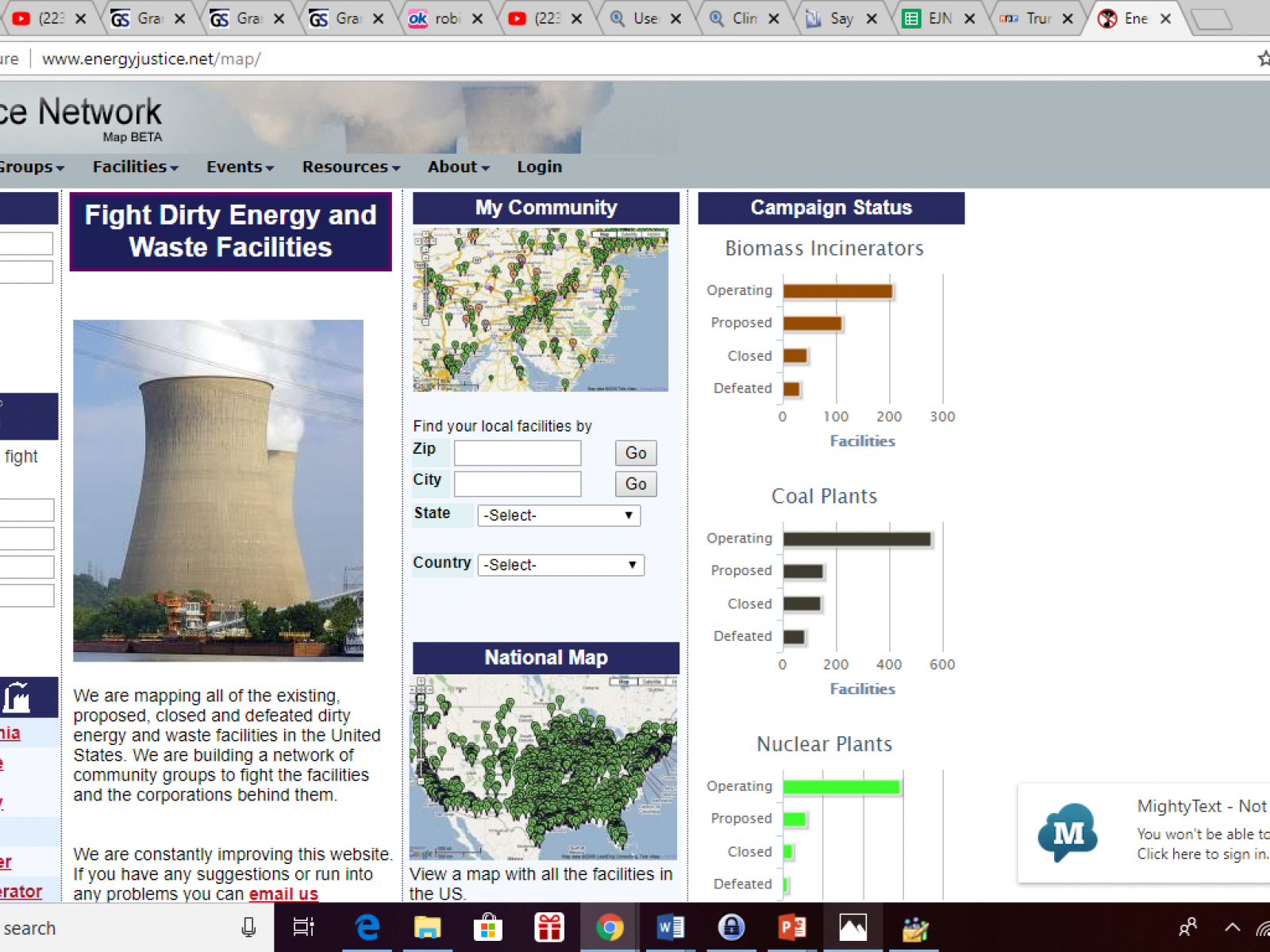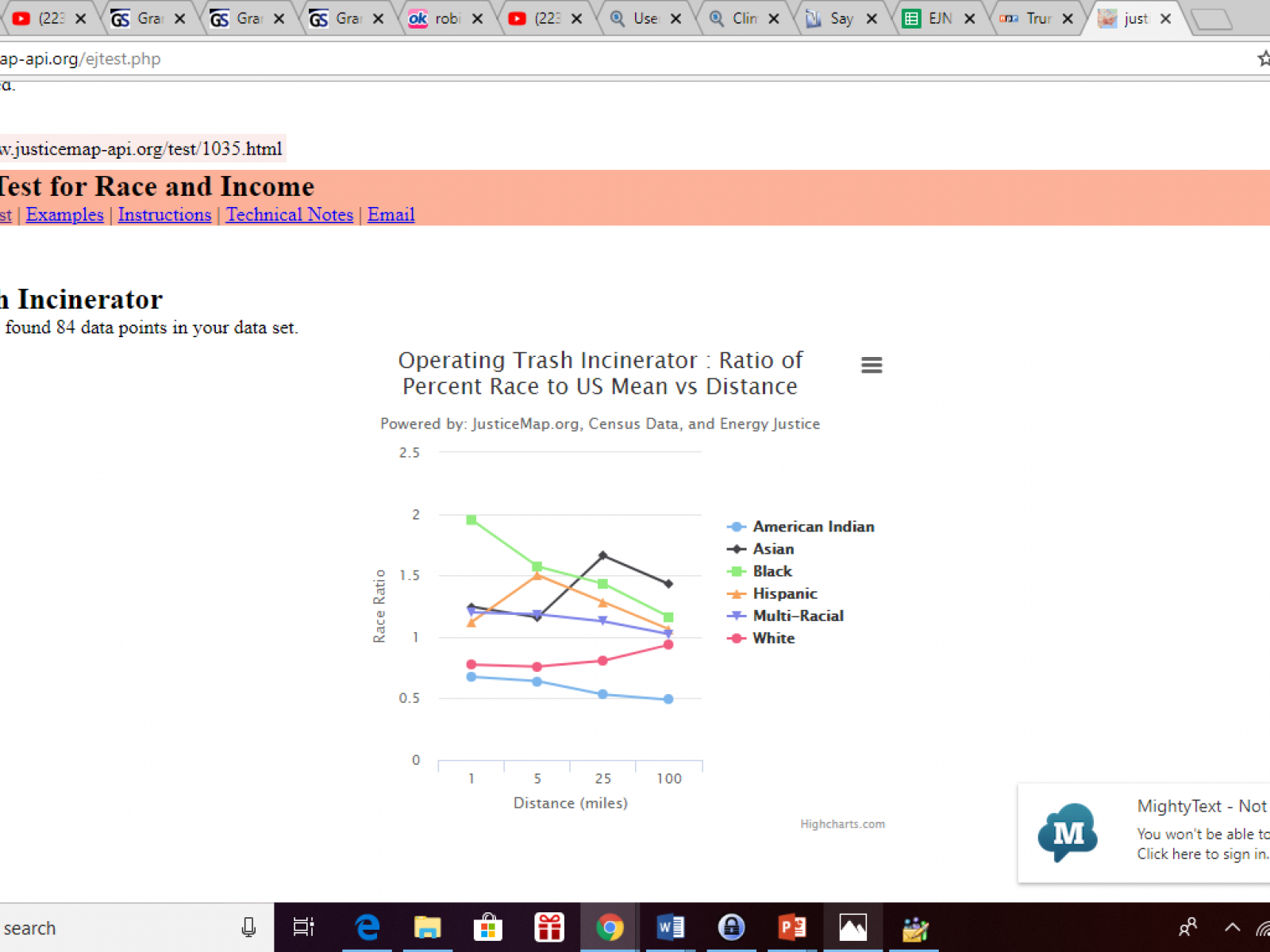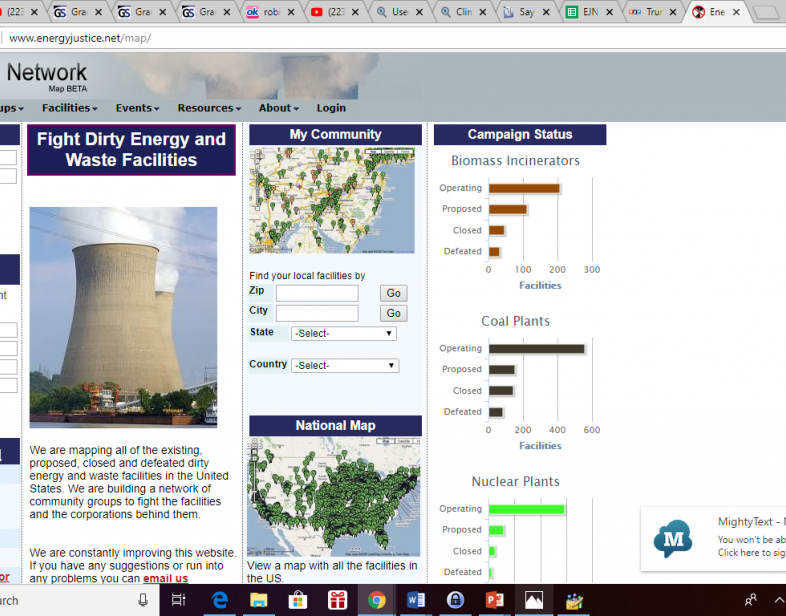An Overview Of Our Solution
Divert Baltimore is an innovative, incentivized recycling program designed to play a role in the closure of the city's largest air polluter, the Wheelabrator Baltimore trash incinerator (Wheelabrator). The program provides temporary jobs to collect data, access to free recycling bins, and education on the health and financial impact of incineration on Baltimore. These jobs provide part of our vision for a zero waste economy that will alleviate the rampant poverty in Charm City.
- Population Impacted: 400 directly
- Continent: North America
Context Analysis
The City of Baltimore faces a crisis that lies at the confluence of solid waste management, clean air, and economic justice. While most attention is placed on mobile sources of pollution, the city’s largest stationary air polluter is its trash incinerator, Wheelabrator Baltimore (Wheelabrator). In operation since 1984, Wheelabrator accounts for 37 percent of all air emissions from industry in the city. It is number one in mercury, hydrochloric acid, carbon monoxide, sulfur dioxide, nitrogen oxides (NOx), and lead emissions, releasing over 10,000 lbs. since inception. From a climate change perspective, Wheelabrator has released over 3 million tons of CO2 since 2013! Sulfur dioxide and NOx, for example, increase the lifetime risk of heart disease and stroke, and also trigger asthma attacks. And Wheelabrator’s NOx emissions are so massive, closing the incinerator would be the equivalent of taking half the cars or half the trucks from Baltimore’s roads.
Describe the technical solution you wanted the target audience to adopt
It's time for Baltimore to move toward a zero waste economy.
Type of intervention
Describe your behavioral intervention
The primary behavior we are trying to change is how Baltimoreans approach waste. Wheelabrator looks like a welcoming monument into the city, with a large white smokestack emblazoned with "BALTIMORE" on its side. Although this positive image is far from the truth, there is a major disconnect between residents moving waste into their green bins and where it winds up. What's more, Maryland law mandates that incinerators not release visible emissions, so people are much less inclined to question Wheelabrator's activities. By installing an innovative, incentivized program like Divert Baltimore, while advocating for the construction of greener solid waste infrastructure, we will help Baltimore make a critical and just transition.
One of the major components of Divert Baltimore is to provide access to free and larger recycling bins. Although Baltimore City provided free, 65-gallon trash carts to residents in 2016, an $8.5 million cost, the city still charges $15 for a 25-gallon recycling bin and lid. Charging for recycling is counterintuitive building a sustainable Baltimore. So, in our first pilot, we provided 44-gallon bins. In our next pilot, we will try 50-gallon carts. The visual of a larger bin for recycling encourages people to reconsider their disposal habits.
As needed, please explain the type of intervention in more detail
Baltimore City has played an intentional and unintentional role in the development of our solution. Intentionally, Baltimore has chosen not to provide recycling bins to its residents due to classist and racist sentiments. There have been Councilmembers and other government officials over the last few years of our work that have indicated that they're just worried about people putting their trash in the trash can. Unintentionally, Baltimore city government has fed the beast that is Wheelabrator for the last 34 years - minimizing its trash volume, but polluting its city with lead, mercury, sulfur dioxide, nitrogen oxides, hydrochloric acid, carbon monoxide, and carbon dioxide. Our effort fights back.
Describe your implementation
In the initial pilot, we went door-to-door and attended community meetings to recruit 95 homes and five Block Captains. The Block Captains were provided an educational workshop on the history of Wheelabrator, the health impacts from its pollution, the importance of recycling, and the economic benefits of moving toward zero waste. The first month of the three-month pilot had the Block Captains visiting homes on specific routes to gather baseline data on the amount of trash produced by each home. At the end of Month 1, we held educational workshops for participating residents, which included the same information learned by the Block Captains, as well was a list of what is and what isn't recyclable. For residents who were unable to attend, we distributed pamphlets in English and Spanish that told residents who we are and what we do, as well as a display of what is and is not recyclable in Baltimore. After the workshops, we distributed the 44-gallon recycling bins, which were about 68% the size of trash bins. For Months 2 and 3, the Block Captains visited homes twice weekly on the nights before trash and recycling pickup to collect data. We sent texts and called residents to keep up their participation in the eight weeks of recycling, and after aggregating the data in January, we awarded the top 5 homes up to $1,200. All residents were informed these personal incentives were one-time occurrences to express appreciation for participation in a new program, as well as assistance for families in a community that has been left behind. They learned the community-wide pilots down the road will include a community-wide incentive. And the results of the project were promising!
External connections
Baltimore City has played an intentional and unintentional role in the development of our solution. Intentionally, Baltimore has chosen not to provide recycling bins to its residents due to classist and racist sentiments. There have been Councilmembers and other government officials over the last few years of our work that have indicated that they're just worried about people putting their trash in the trash can. Unintentionally, Baltimore city government has fed the beast that is Wheelabrator for the last 34 years - minimizing its trash volume, but polluting its city with lead, mercury, sulfur dioxide, nitrogen oxides, hydrochloric acid, carbon monoxide, and carbon dioxide. Our effort fights back.
Who adopted the desired behaviors and to what degree?
Overall, the participating homes recycled 82% more per week (~10.2 lbs.) compared to the citywide average of about 5.6 lbs. weekly. This increase likely is much higher by community standards, but Baltimore currently does not monitor community recycling rates. The homes that participated in the workshops recycled a whopping 157% more per week (~14.3 lbs.) than the citywide average. Together the homes recycled almost four tons in two months! And at least 37% of the homes were recycling for the first time.
How did you impact natural resource use and greenhouse gas emissions?
The impact of this initial can be viewed as small, with four tons of discarded materials being kept from an incinerator that burns over 700,000 tons annually from Baltimore, Baltimore County, and other municipalities. However, the initial program proved that providing access, education, and a bit of an incentive significantly increases recycling rates. If everyone were to recycle at the overall rate from the pilot, we'd keep over 54,000 tons out of Wheelabrator each year - much higher than the current rate of about 29,650 tons, or 14.7%. At the rate of those who attended the workshop, we'd recycle over 76,000 tons!
What were some of the resulting co-benefits?
As we distributed recycling bins at the start of Month 2, community residents who were not home or did not open their doors during recruitment wanted to acquire bins as well! Just the simple visual of distribution piqued interest. Moreover, we helped 10 families directly through payment of the Block Captains and rewards to the top five households. Everyone has begun to spread the word about Divert Baltimore, and the host community of the incinerator wants to participate again. We find this paramount as it is important to build out from the people right under the nose of the city's largest air polluter.
Sustainability
Currently grant-funded, the intention is for Baltimore City to take over and make the program municipally-funded. If a given community surpasses a defined recycling rate, it's awarded with funds no longer used to burn trash and harm their air - a community betterment fund. Whether it's community gardens, better streetlighting, or fixing potholes, the residents choose what is the best usage for those funds. We anticipate citywide adoption by 2021, which is the same year that the city's contract with Wheelabrator ends. We believe that with Divert Baltimore, alongside public-private collaborations to build greener solid waste infrastructure over the next few years, the apparent need for the incinerator no longer will exist!
Return on investment
The initial pilot costs $24,000 to purchase and distribute bins, pay program coordinators and Block Captains, print distributive materials, and reward the top families. In the next pilot, we estimate a cost of at least $30,000.
How could we successfully replicate this solution elsewhere?
Divert Baltimore is unique in that there is no known incentivized curbside recycling program. It meshes container-return programs with typical neighborhood pickups. However, this model can be instituted throughout the country. Cities like Detroit and Newark also have trash incinerators that are their largest, non-airport polluters, and low recycling rates. We have ties with organizations in both cities, and have begun discussions about the possibility of Divert Detroit and Divert Newark. What's more, this program is not limited to communities with incinerators! Many cities dependent on landfills also have low recycling rates, and need an innovative way to change behavior.




